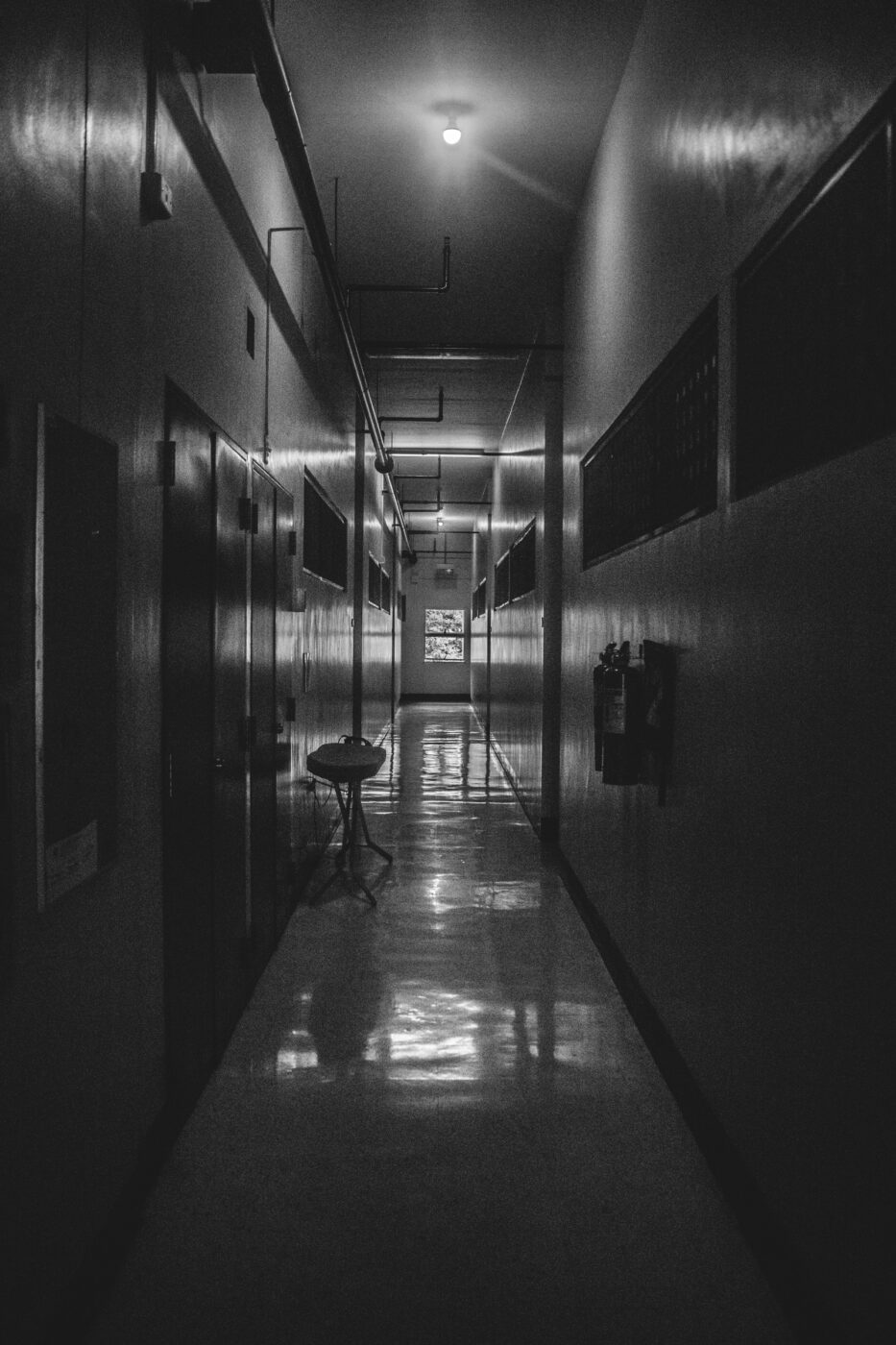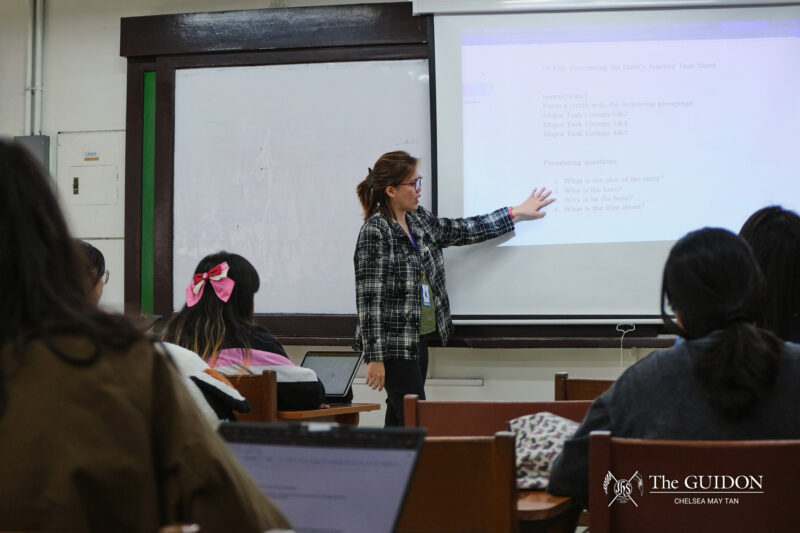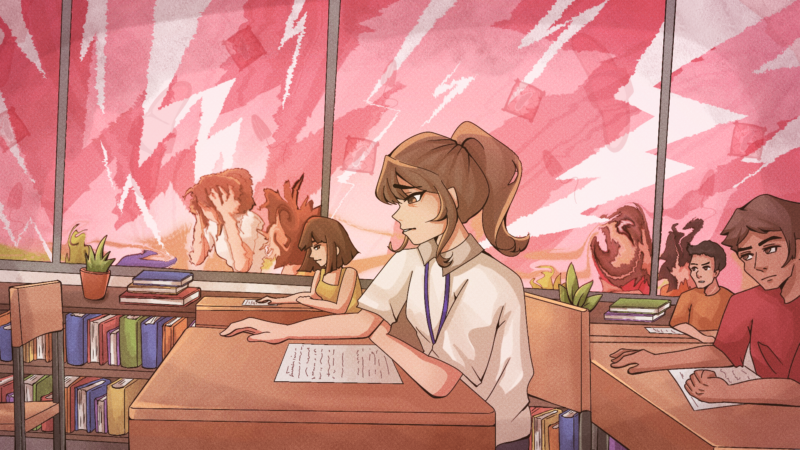At the foreground of the campus dorm complex looms a skeletal structure, partially concealed by construction paraphernalia. When viewed from the opposite end of the street, one’s attention is drawn to the tarpaulin depicting the finished building in all its digitally-rendered glory. This is the International Residence Hall (IRH), a world-class dormitory intended to strengthen the university’s bid to be a globally-competitive institution. From the perspective of some residents in the old dorms, however, this new building is less a symbol of progress than it is a biting snub.
The old dorms have run into maintenance problems as of late, including the malfunctioning of elevators and some broken hallway lights. The fact that 60% of the rooms in the IRH are intended to be exclusive to foreign students only adds to the tension felt by some dormers. Some ask why the administration is pouring funds into the IRH when the old buildings have their own glaring problems to deal with.
“I and some other dormers find it baffling that they are pooling funds to a new building, when there is still plenty of room and the internet still needs work,” shares Joey Victorino, a philosophy senior and dormer.
In reality, however, the issue at hand reveals more than it lets on at surface-level.
Clarifying the narrative
Concerns about dormitory upkeep and maintenance have already been raised prior to the construction of the IRH. There are dormers who feel that the administration of the Residence Halls (RH), which is made up of Cervini and Eliazo Halls and the University Dormitory (UD), should address the problems of the old buildings instead of narrowly placing all focus on the new. Despite this, it can be said that the administration still does its best to care for its students.
Ateneo Resident Students’ Association (ARSA) President Sydney Tan shares: “It’s not that they don’t care for us. There was one time our water was cut, and once we brought it up, it was all fixed up after 10 minutes. It’s more about taking our concerns and reporting them.”
While there are complaints about facilities and performance of utilities, dormers also admit that they share a role in upkeep. “We can’t always blame the admin. However, recently, the internet has been quite slow and it has been getting cut off more frequently. A common argument I hear is: ‘If we have the resources to put up a new building, maybe we could also consider making the internet more stable and faster,’” Tan continues.
Along with complaints on web access and stability, dormers have also pointed to some of the lights in the hallways not functioning, as well as the elevator occasionally not being accessible. Tan shares that some spots in the dorm have no cellphone reception, and so residents cannot even depend on cellular data when the internet is down. This, therefore, impedes academic work for which stable internet connection is a necessity.
While these are sound concerns to be raised, the administration notes that the perceived oversights are not the result of bias for the IRH. Head of the Office of Facilities and Sustainability Elias Pan shares that the pool of resources for the maintenance of the dorms and the construction of the IRH are handled by different offices. RH Director Tim Gabuna echoes this, saying that he is unaffiliated with the IRH, which is handled by the Office of University and Global Relations.
The problems of the RH are hence better traced to the decreasing influx of new dormers. Pan shares that the K-12 scenario has significantly lessened the number of residents. The semestral payments of dormers contribute in large part to the pool of funding for RH maintenance and improvement.
Pan adds, “While there are free rooms now, we thought it would be wise to construct [the IRH] to place the massive influx of new students coming in after K-12.” This would indirectly mitigate the perception of facilities constraint already existing in the RH dormitories. One of which is the fact that there is only one pantry to be shared by all the seven floors in each building of UD.
Room for improvement
The recently concluded Dorm Life Satisfaction Survey, a measure of the satisfaction of dormers, uncovers compelling data about students’ views towards the RH. Among the six components, “Procedure” garnered the highest overall mean score of 4.5/5, meaning that protocol such as reserving rooms, filling out forms, and checking out are considered sufficient by the residents.
On the other hand, “Facilities” obtained the lowest rating at 4.11/5, indicating that amenities like bedrooms may be improved. Among the 36 items, the bathrooms received the lowest grade of 3.62. The results of the poll are already being used as a baseline to establish initiatives to develop the RH.
Research argues that a dissatisfaction in dorm life correlates more with architectural design instead of administrative style. A 1973 study advised that revamping rooms may reduce the financial competitiveness of dorms. For this reason, university housings were built with crippling limitations.
Moreover, the choice to live within campus was challenged by a substantial market of commercial builders. These companies develop housing facilities that may compete with established dorms. Given that UD and Eliazo Hall will soon celebrate their 10th and 50th years respectively, the stiff competition may provide better alternatives for students who are unsatisfied with the current living conditions offered by the RH.
The same survey gives attention to the feedback of the dormers. Students have shared that the study rooms functioned more like play areas or repositories of school bags. In addition, they have been frustrated with the lost cooking ware in the pantries. When asked about the facilities that garnered the lowest ratings, respondents also voiced their dissatisfaction with the bathrooms, bedrooms, and cafeteria.
The administration, however, has not turned a blind eye on the suggestions of its residents. They have responded to the feedback by enforcing rules that may help ameliorate the issues in the short term.
Gabuna affirms that the dorms may indeed benefit from some refinements. He admits that the room cabinets will only be replaced if they get dilapidated. Since they are built-in, the best the administration can do is to simply repaint them. Gabuna estimates that the cabinets currently have 20 layers of paint. He does anticipate, however, that in 50 years, the rooms could be remodelled, with furniture made of laminated wood so as to forego the task of repainting entirely.
In order to maintain the quality of the rooms, Gabuna has the mattresses changed every seven years, instead of the supplier-recommended 10 years. After, he puts them on sale for the Ateneo staff. The office also donates to such communities as typhoon Ondoy victims and inmates from the New Bilibid Prison. Gabuna further clarifies that the income is centralized, and that the disposal goes to the Central Purchasing Office.
Gabuna maintains that interested tenants may first opt for a tour of the halls, given that the RH does not advertise their facilities and services such as access to hot and cold water, Residential Advisers, and a cafeteria. The administration remains confident with what the RH has to offer.
The RH also supports dormers by providing subsidies for school activities like retreats, especially for scholars who may not have enough funds. Gabuna cites the possibility of opening food scholarships for some dormers. Despite the need for improvement then, the office is ready to respond to the needs of residents.
Gradual developments
As the IRH is poised to help bolster Ateneo’s international visibility, one wonders whether the construction of the building will truly help the school. When asked if he thinks the Ateneo is prepared to compete globally, Gabuna answers in the negative, seeing that many of the school’s foreign students travel to the Philippines solely to learn English.
He also observes that foreign Asian students only stay for a semester to complete their English studies before leaving again. Because of this, as well as the nation’s problematic media image, Gabuna believes that the IRH will not exactly prove to be the clincher in the school’s quest to cast itself as an international competitor.
Nevertheless, the administration asserts that it places the concerns of residents above all else. Pan states that since the beginning of his term in 2011, he has made efforts to respond to the needs of residents by building walkways, pantries, new comfort rooms, and recreational areas.
The RH’s overall sustainability has also been taken into account. Pan states that through the administration’s efforts, the old buildings are now fully equipped with LED Lights and solar-powered shower heaters. Major improvements have also been made for the water systems, particularly with the leakages. In Eliazo alone, the repairs managed to save Php 90,000 per month for the water bill.
Pan adds that he also helped standardize room-cleaning policy, which now takes place twice a week. He ensures that the maintenance staff is always alert and present when on the job: “A quick response time is very high on our list of priorities,” Pan says, “In fact, it is our first priority.”
This maintenance staff is composed of 17 employees. Gigi Tacis, one of the workers, states that the needs of the students are promptly and consistently attended to. Twice a week, she cleans her assigned rooms, and says that whenever a student files a request form, it is attended to within the day.
The maintenance staffers are not without their own problems however: Common complaints they raise regarding students include leaving their ceiling fans on, not flushing, or leaving their clothes to dry in the hallways. Sometimes, it is due to the residents that facilities like flushes and fans break. Tacis affirms, however, that when this occurs, they are quickly replaced.
As far as administration is concerned, they are doing everything in their power to ensure resident satisfaction. “[We] have not neglected the dormitories; in fact we’ve come to spend over Php 25 million on renovations and improvements of the facilities,” Pan says.
Much can be said about the IRH, but until its completion, its exact impact on Ateneo dorm culture remains to be seen. However, the project is in no way affiliated with the RH, and though it may boast hotel-like amenities, it is a luxury that does not seem to come at the expense of current dormers’ comfort. While the administration insists that it makes gradual improvements to optimize dormers’ living experience, students must nonetheless remain aware of the facts behind the issues that concern them.







